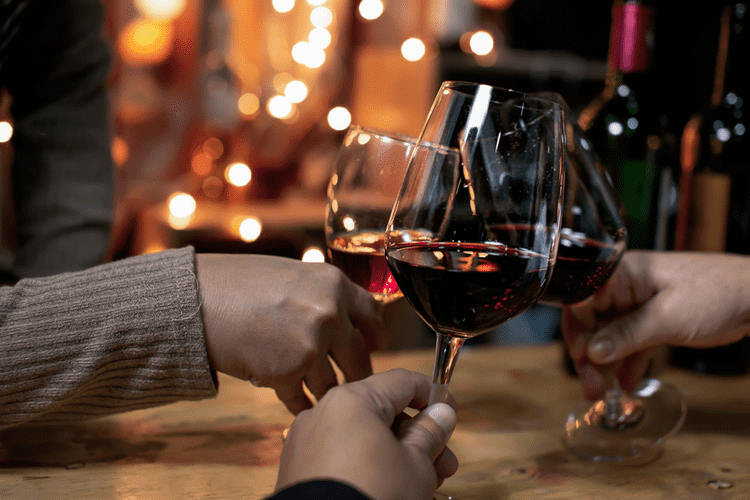As individuals continue to work through the 12 steps, their understanding of powerlessness and unmanageability deepens, offering inspiration and guidance to others on their recovery journeys. The act of helping others and giving back to the recovery community becomes a meaningful way to repay the support received. One of the most significant benefits of embracing powerlessness in sobriety is finding freedom and inner Sober living house peace. When we let go of the illusion of control, we free ourselves from the constant struggle to manipulate and manage every aspect of our lives. This liberation allows us to live more authentically, accepting ourselves and our circumstances as they are. By embracing powerlessness, we can focus on the present moment and find peace within ourselves.
Why Does AA Use the Idea of Powerlessness?
No human is meant to go through life alone without support, we all need others. The sooner you can realize this and accept help the stronger you will be. There are a lot of things alcoholics can do to fully work Step One.

examples of powerlessness over alcohol
- By recognizing and embracing these examples of powerlessness in sobriety, individuals can navigate their recovery journey with a greater sense of self-awareness, humility, and resilience.
- Whether through AA meetings, support groups like Al-Anon, or personal practices, connecting with a higher power brings clarity and peace, breaking the cycle of addiction.
- Alcohol use is extremely common in societies across the globe, and not everyone who drinks alcohol develops an alcohol addiction.
Adam Vibe Gunton is an American author, speaker and thought leader in addiction treatment and recovery. After overcoming homelessness and drug addiction, Adam found his life’s purpose in helping addicts find the same freedom he found. The Big Book uses the story of a jaywalker to illustrate how mental obsession works. Like the jaywalker who repeatedly steps into https://ecosoberhouse.com/ traffic despite severe injuries, we continue drinking or using, unable to stop. This story reveals the insanity of addiction and how it hijacks our ability to make rational decisions.
Common Areas of Perceived Powerlessness
Then, you’ll be ready to move through the remaining 10 steps until you reach a point where your AUD is manageable. Alcohol use is extremely common in societies across the globe, and not everyone who drinks alcohol develops an alcohol addiction. Many people who drink on an even somewhat regular basis may at some point ask themselves, “Am I am alcoholic? How can you tell the difference between simple alcohol use and addiction? Well, understanding manageability is a factor that can be used to determine if someone has crossed that line.
Which Treatments Complement Working the 12 Steps?
It’s not just about stopping the addictive behavior, but also about healing the wounds that may have led to it in the first place. Connection is a powerful antidote to addiction, and therapy can help rebuild those connections both with yourself and others. So, you’ve recognized the signs of powerlessness and accepted that you need help.
This includes attending meetings regularly, getting counseling, practicing mindfulness, and staying connected with others who share similar struggles. When you admit that you are powerless to addiction, you are empowered to reach out for support. By admitting that your life has become unmanageable, you open yourself up to letting go of control and gain acceptance of yourself.
Building Emotional Resilience
Sharing removes the shame that keeps us isolated and opens the door to healing. The power of fellowship lies in its ability to create a safe space where we don’t feel judged but understood. In these meetings, we meet people who have walked the same road and found freedom. They interpret Step 1 not as a sign of defeat but as the first step toward a new life. Through their stories, we learn that recovery is possible and that the strength of the group can carry us through our weakest moments.
Acceptance of powerlessness plays a significant role in how individuals approach their recovery journey. Understanding that they cannot successfully manage their addiction alone enables them to open up to new forms of support. This includes reaching out to others who share similar struggles, as well as professionals in health and recovery. If so, you must admit defeat, become powerless, and embrace Alcoholics Anonymous (AA) guiding principles, starting with Step 1 of AA. Cravings can become very strong for a person who has an addiction to alcohol.
Alternatively, you can use this entire list as a daily affirmation to support you in your recovery. Slips and relapse are part of the normal trajectory of recovery. To say they bring you back to square one dismisses the work you’ve done so far in your recovery journey. Use them to learn about additional supports you need, the needs or desires that drove you to act out, or catalysts or triggers that create more temptation. Admitting powerlessness requires getting honest with yourself about reality, instead of the “stinkin’ thinkin’” (delusion and denial) that enables your addiction. It involves realizing that your attempts at self-control are not cutting it, and that you need to rely on others to support you in gaining discipline and control.

How Can You Reach Step 1 of AA?

The Diagnostic and Statistic Manual of Mental Disorders, or DMS, lists Alcohol Use Disorders in the manual and includes 11 criteria. Only 2 of the 11 criteria have to be met to be diagnosed with the disorder. Of these 11 symptoms, 4 of them are social symptoms that align with an unmanageable life. Exploring Step One can feel overwhelming, especially when you’re just beginning to consider the idea and possibility of recovery.
- Recognizing the grip that substances have on their lives highlights the need for professional help 1.
- Only after admitting you are powerless can you begin to make changes in yourself.
- Many of the comments made in that discussion are spot on – sobriety isn’t the end goal.
- It’s like trying to stop a runaway train with your bare hands – no matter how hard you try, you can’t seem to slow down or stop.
Then, you’re ready to believe you can manage your AUD with help from outside sources. When you acknowledge that alcohol or drugs have become a problem and recognize how they’re affecting your life, you create space to begin healing. Instead, the first step of AA invites you to look honestly at how alcohol or drugs may be quietly shaping your decisions, relationships and well-being. That moment of clarity can be the beginning of meaningful change. When it pertains to alcohol abuse and substance abuse, you could list many ways that it has become unmanageable. As well as attending meetings, journaling and personal powerless over alcohol examples inventories can help individuals learn how to do Step 1 in AA.
An account of one guy’s experiences with alcoholism and the life changes he required to overcome it. What is the more accurate way of looking at your process in recovery, in light of powerlessness? Choose statements from the list below to combat the mistaken or faulty beliefs you’ve identified from the overt or subtle ways of denying your own powerlessness above.

